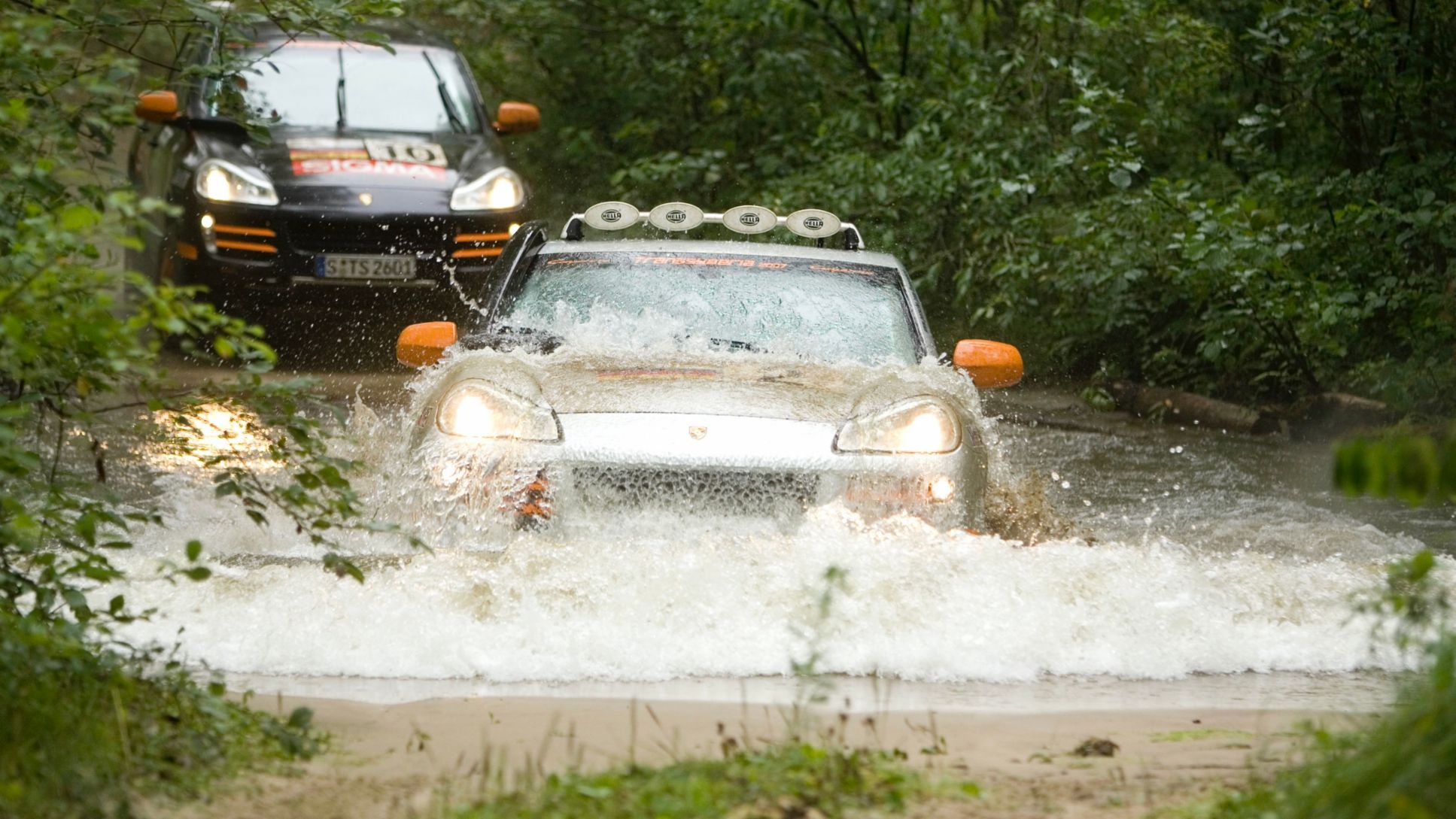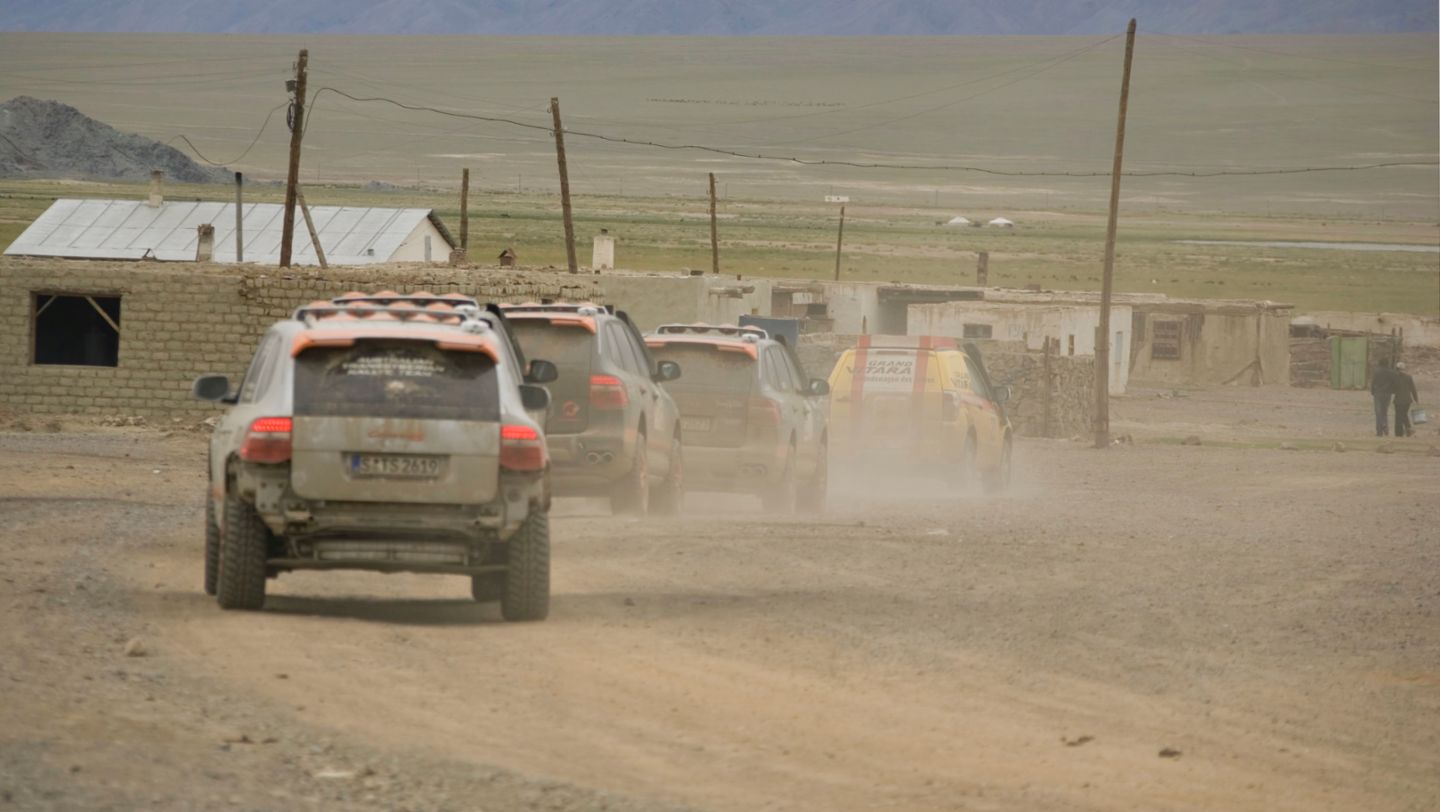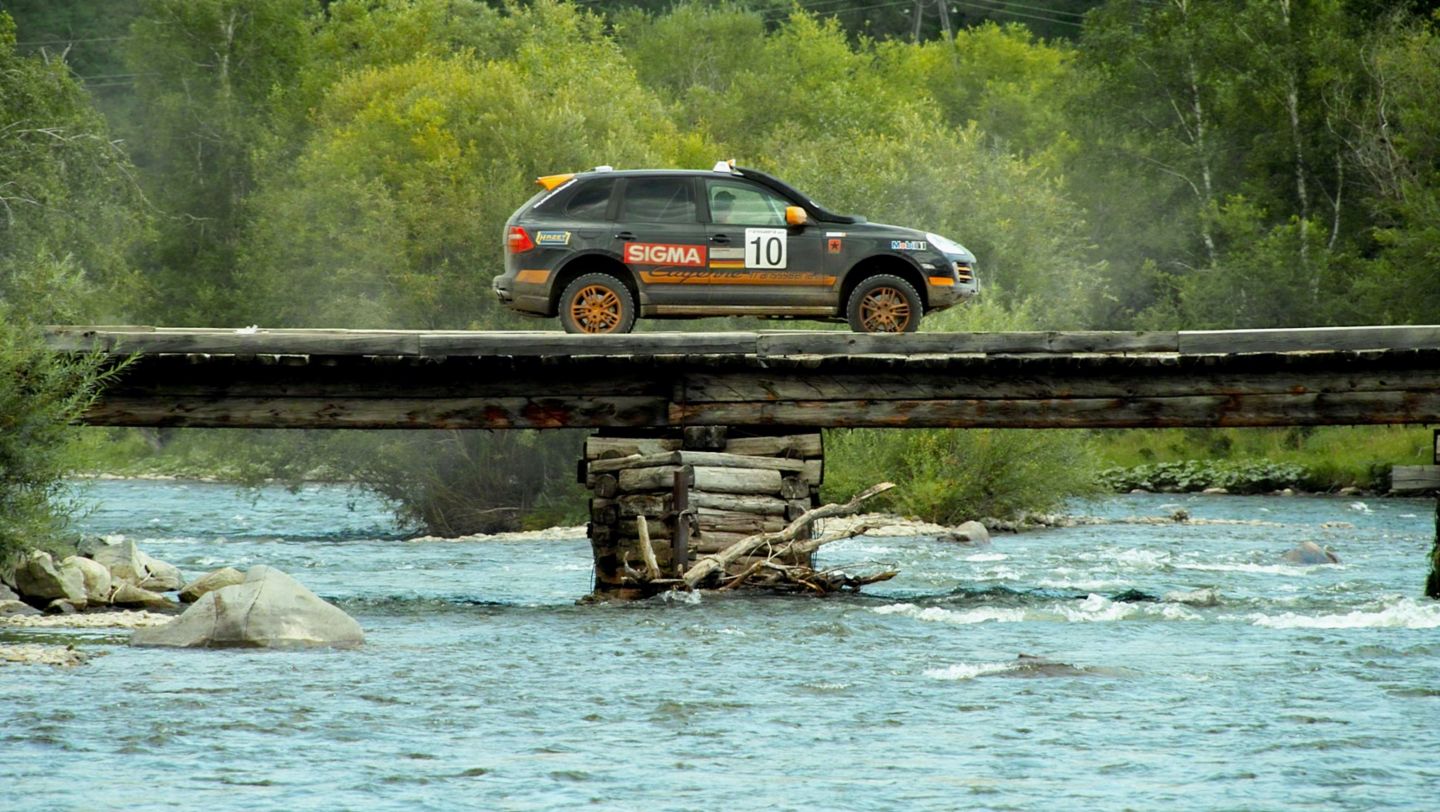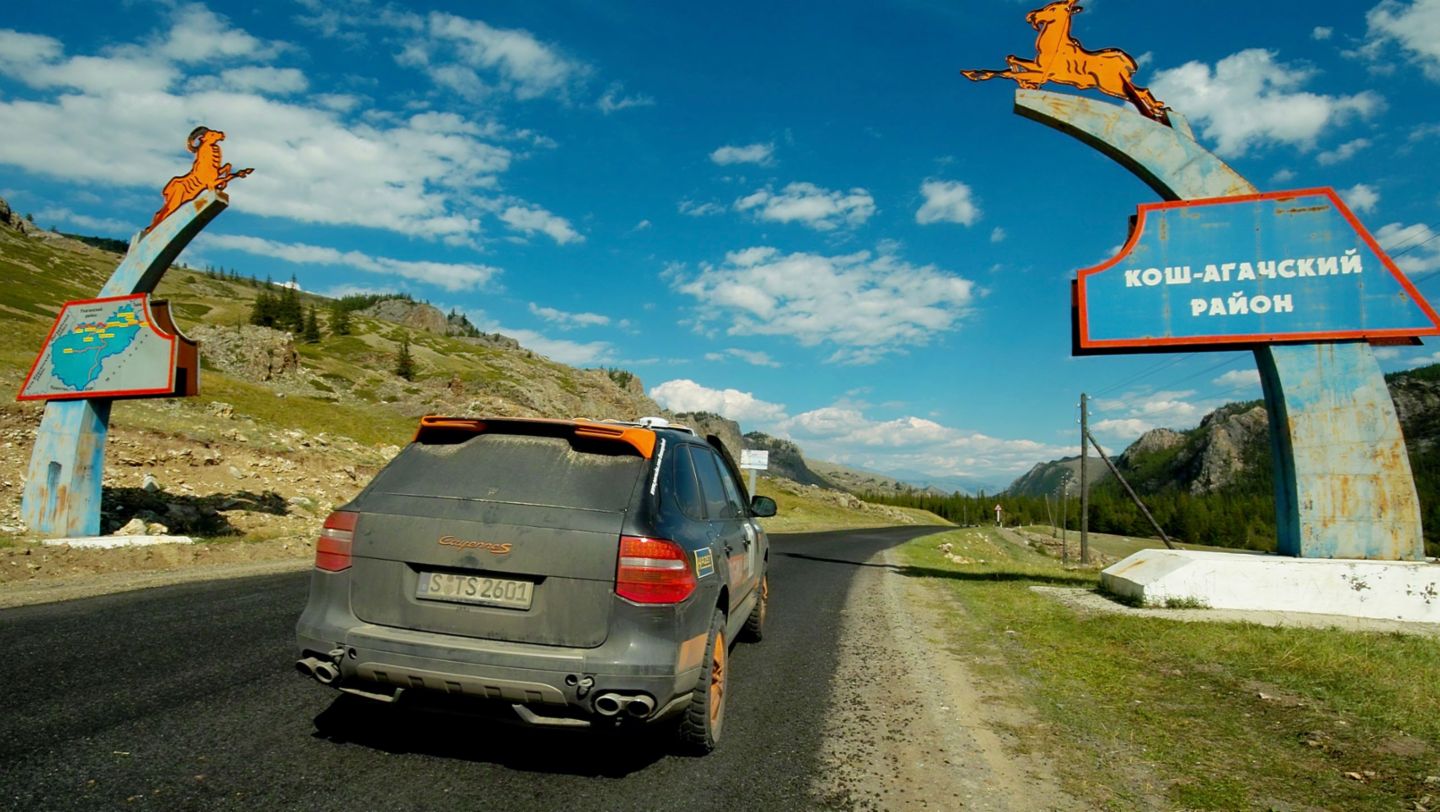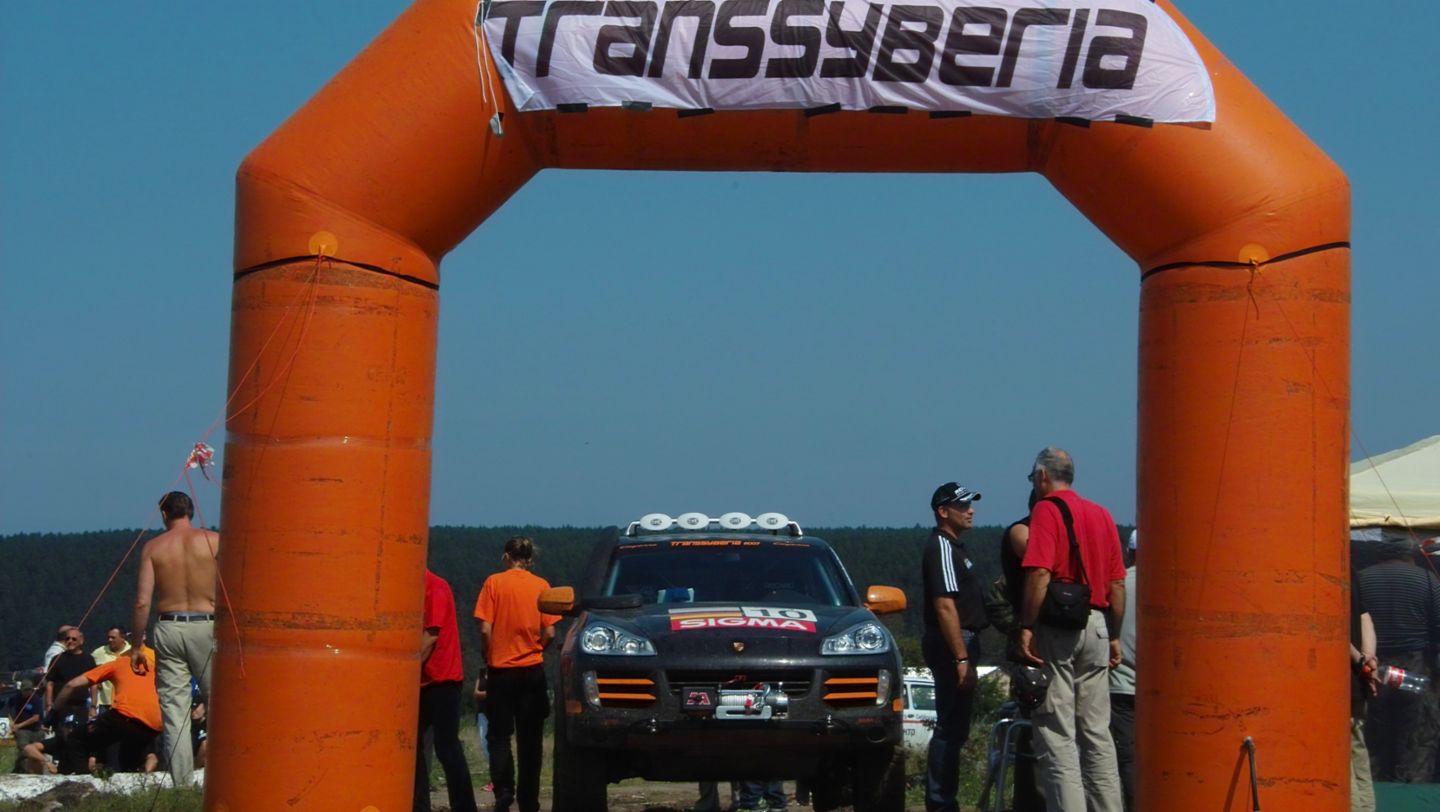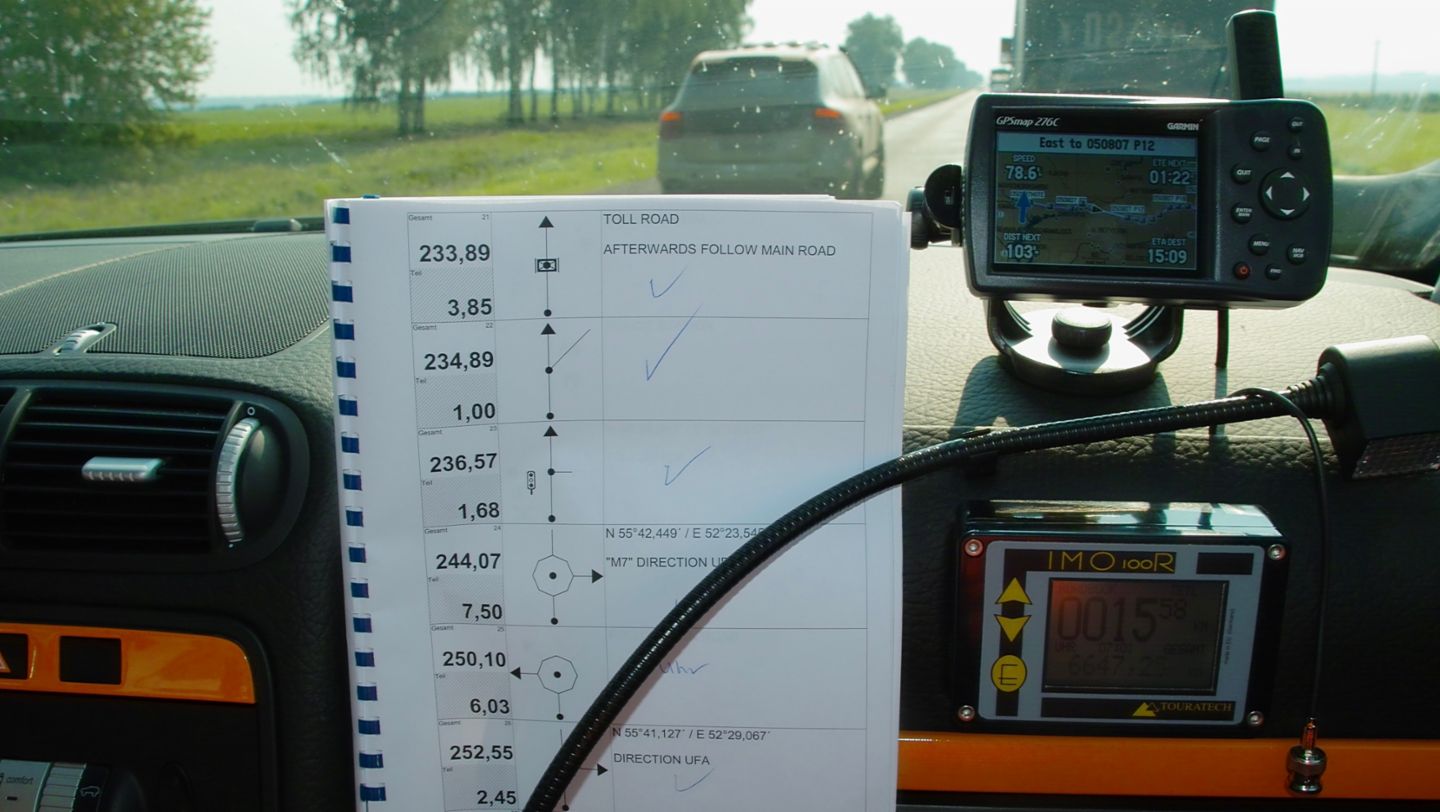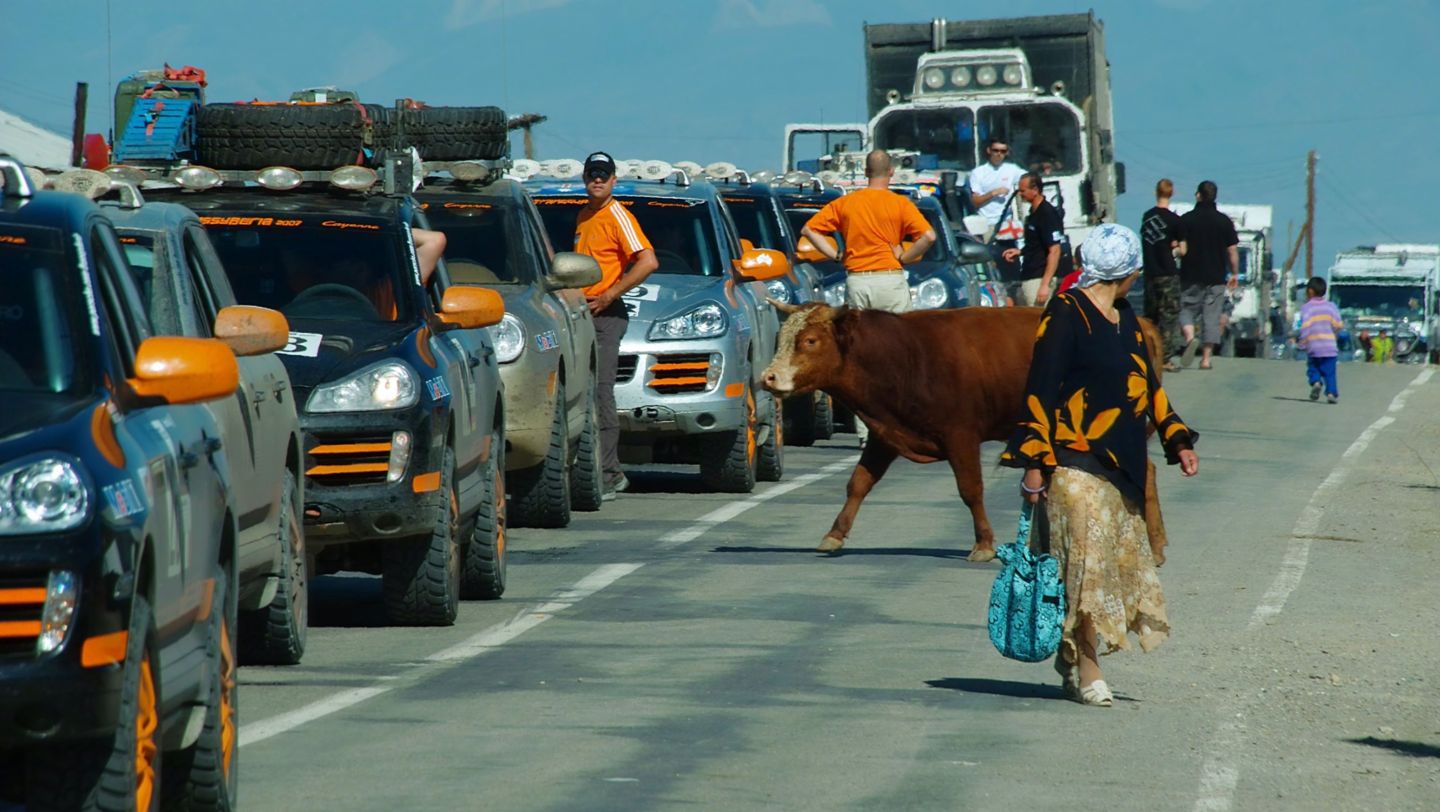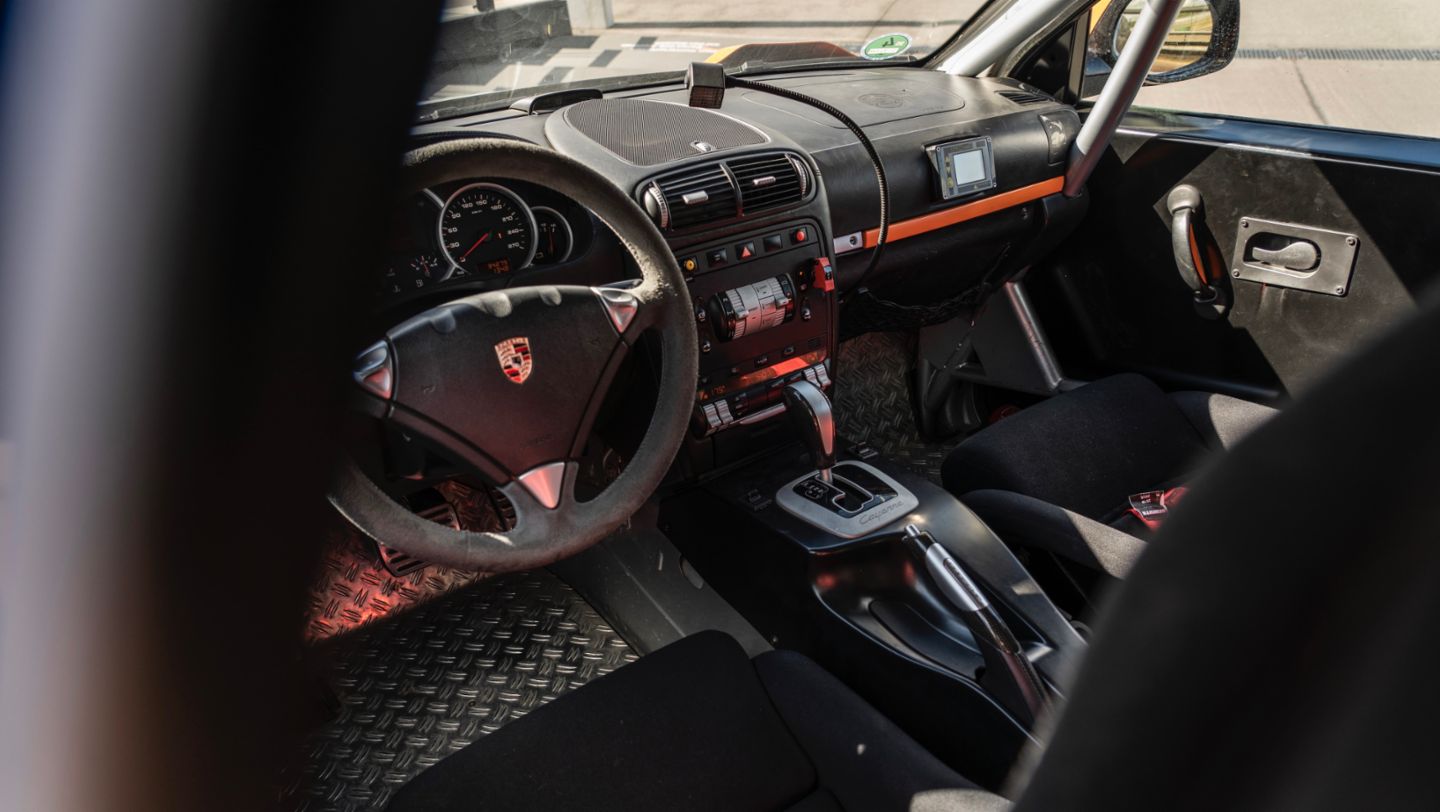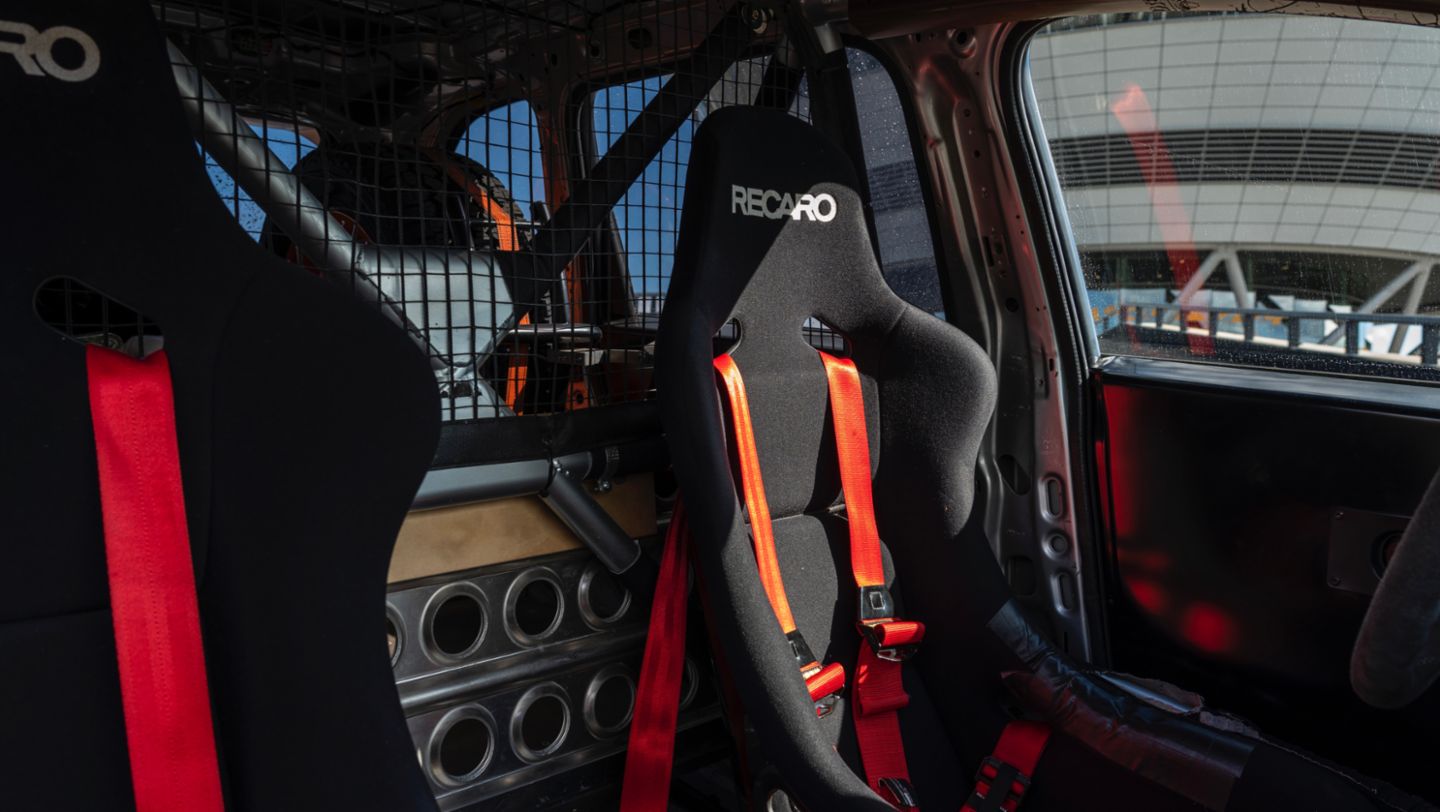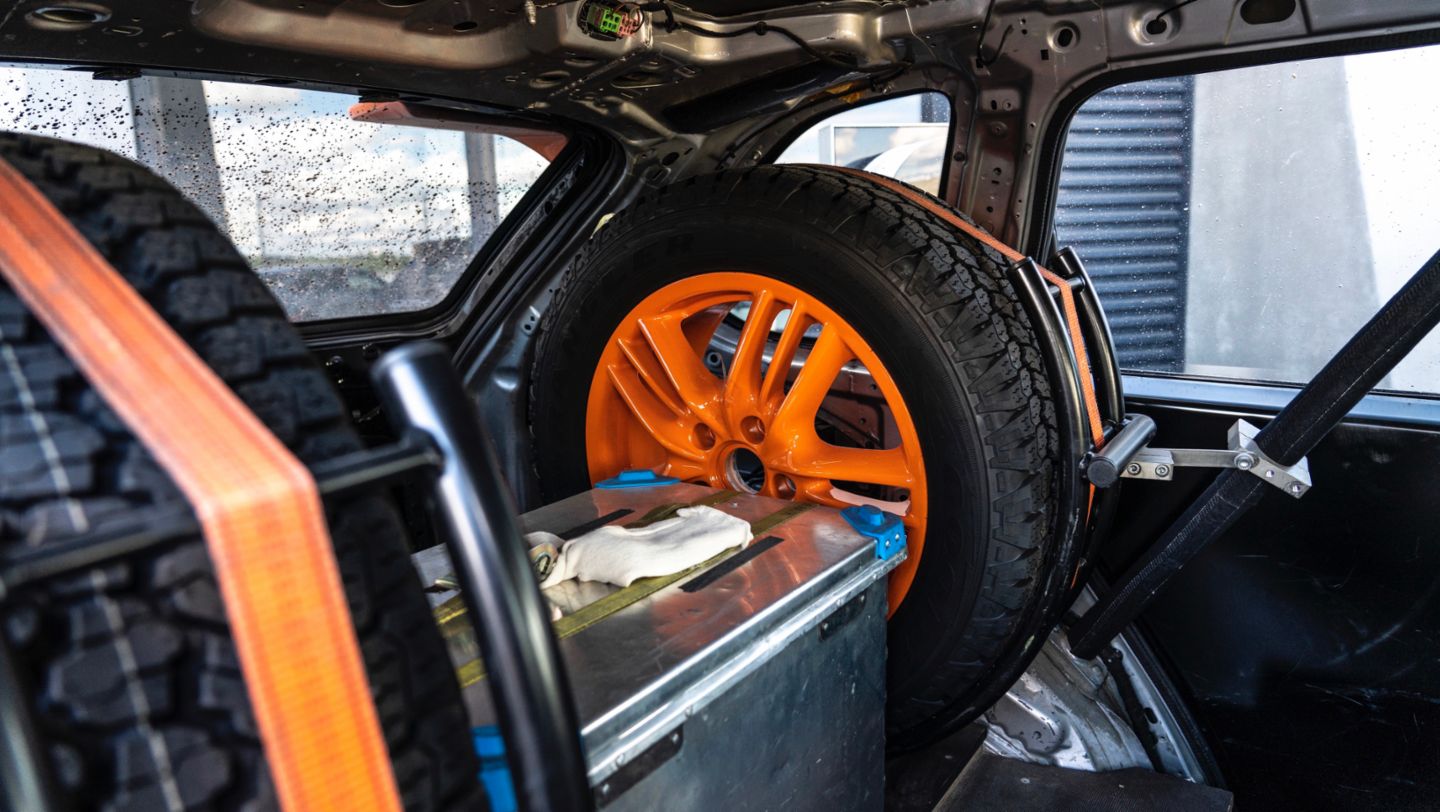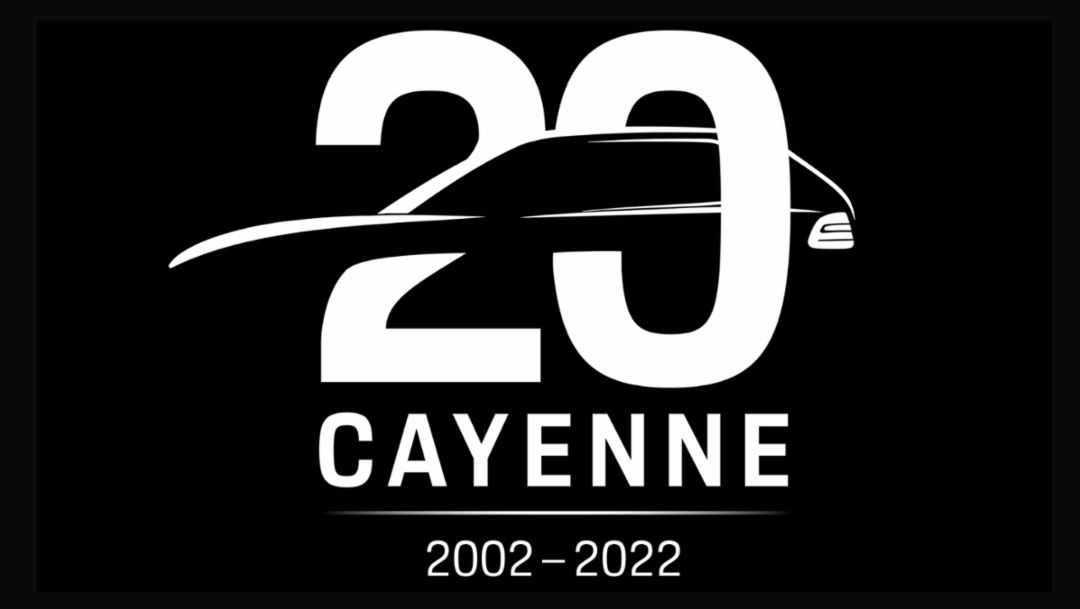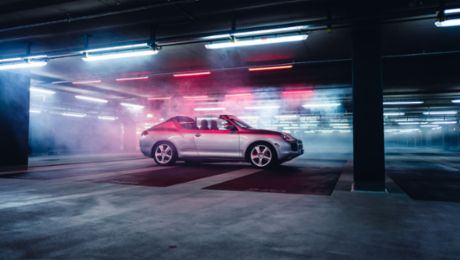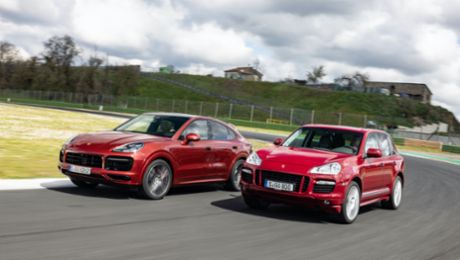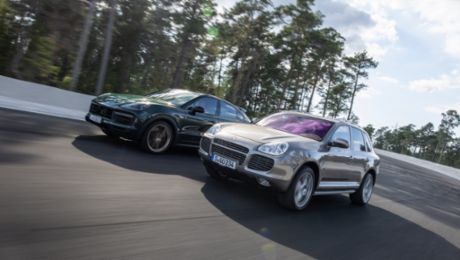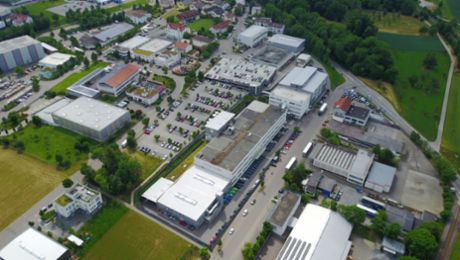It all started in 2006 with a one-two finish by a pair of Cayenne S models in the third running of the Rally Transsyberia. Porsche engineer Jürgen Kern and his Russian co-driver, as well as another German-Spanish private entry, topped the field of 28 teams after a challenging 10,000 kilometres-plus event from Berlin via Moscow, Novosibirsk, Mongolia, Irkutsk and Lake Baikal. Kern, whose full-time job was testing and developing the first-generation Cayenne, and his colleagues had made only relatively minor adjustments to the two production Cayennes for the competition: the air suspension with an off-road technology package including anti-roll bar and locking differential was available as a factory option. Added to this were robust off-road tyres, full-length underbody panelling, a snorkel air filter with a roof-level intake, and rally accessories such as a winch and four auxiliary headlights.
The commanding performance of the two near-standard Cayenne S in navigation tests over unfamiliar terrain, extreme off-road and water driving in the Gobi Desert, and time trials on dirt tracks in Mongolia sent an unmistakable message to Porsche management. As a result, the sports car manufacturer expanded its customer sports programme to include an exclusive limited run of 26 Cayenne S Transsyberia models. The sporty off-roader was developed using the Cayenne S as a starting point and was specifically optimised for participation in long-distance rallies. Private teams were to use it to tackle the 2007 Transsyberia Tour over 6,200 kilometres from Moscow across Russia to Ulaanbaatar in Mongolia.
“All the teams were independently run, with the servicing organised by Porsche,” recalls Jürgen Kern, whose responsibilities included looking after those who didn’t make it to the finish line. “One vehicle landed out of control after a 20-metre jump and rolled several times. The force of the impact ripped the engine right out of the car and separated the gearbox from the engine.” The driver and front passenger emerged unscathed thanks to the Transsyberia being equipped with a safety cage firmly bolted to the passenger cell, in addition to the standard Cayenne’s robust bodyshell and its reinforced A- and B-pillars made of the highest-strength steel.
Waterproof to 75 centimetres
In addition to the cage, all 26 rally Cayennes had a shorter axle ratio for better acceleration. Added to this were reinforcements to the underbody and a differential lock, which was also available for the production vehicles as part of the off-road technology package. In addition, the body and doors were sealed against water ingress up to the level of the side windows, allowing a wading depth of about 75 centimetres at the air suspension’s High Level II setting. The air intake for the engine was via a roof-level snorkel. Reinforced front wishbones increased the track width by 34 millimetres, and the 18-inch wheels were fitted with 255/55 R18T specialist all-terrain tyres, certified for a reduced maximum speed of 190 km/h. However, due to its shortened axle ratio, the Cayenne S Transsyberia did not reach this speed anyway.
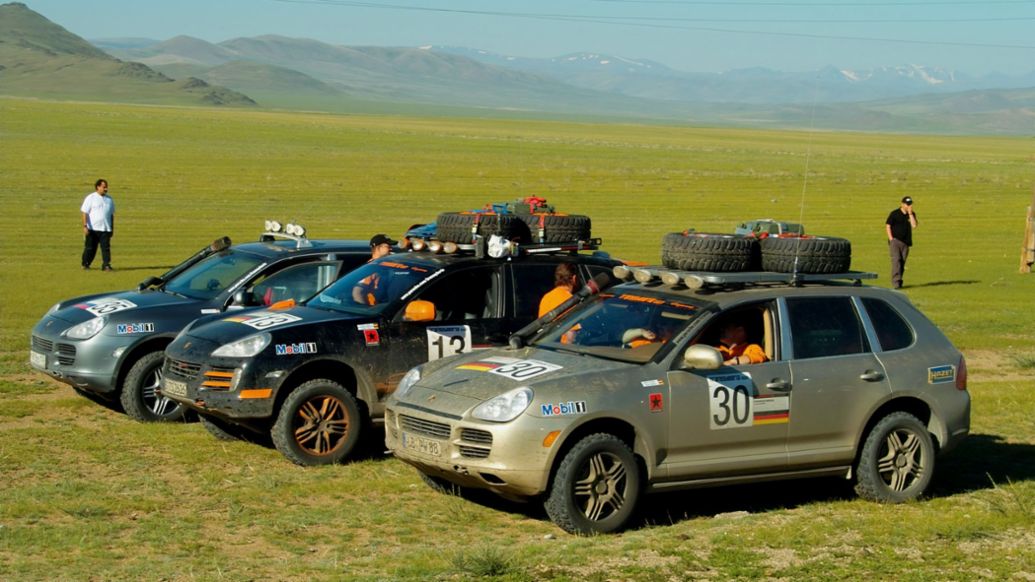
The rally Cayenne benefited from the first model update of the base vehicle. The 4.8-litre naturally aspirated engine, unchanged for the competition, now produced 283 kW (385 PS) instead of 250 kW (340 PS), and maximum torque had increased from 420 to 500 Newton metres. The revised V8 now had even better fuel economy. Porsche Dynamic Chassis Control (PDCC) was also incorporated into the chassis concept. This anti-bodyroll technology not only helped the large SUV to achieve more stable and level cornering with more traction, but also enabled greater axle articulation in off-road terrain. With its perfect technical basis and efficient additions, the Porsche SUV not only triumphed again at the 2007 Transsyberia Rally, but indeed thoroughly outclassed the competition: Cayenne teams swept the podium. Overall, the Porsche fleet took seven of the top 10 places.
With this success, Porsche underscored not only the Cayenne's off-road performance, but also its reliability and quality: “The vehicles survived the rally well, and most of them were even used to drive the Transsyberia Tour a second time,” says Jürgen Kern. In 2008, 19 teams took part again with the same vehicles. “We didn't build any new cars for this and didn't even change the chassis,” Kern recalls. The only innovation was an even more robust off-road tyre for the long gravel sections in Russia and Mongolia. The triumph of the previous year was even surpassed this time after more than 7,000 kilometres completed between Moscow and Ulaanbaatar: among the top 10, only the seventh-placed vehicle was not a Cayenne S Transsyberia. This proved the on- and off-road potential of the Cayenne once and for all.
Special model for everyday use
In 2009, Porsche celebrated the Cayenne S Transsyberia's rally success by launching a road-legal special edition powered by the naturally aspirated V8 engine of the Cayenne GTS that had been released in the meantime, which had been uprated to 298 kW (405 PS). The axle ratio of the GTS, which had been shortened by 15 per cent, was also adopted, which meant that the Transsyberia special edition, when fitted with the standard six-speed manual gearbox, accelerated from 0 to 100 km/h in under 6.1 seconds, half a second faster than the regular Cayenne S. A Tiptronic S was available as an option. The limited edition featured air suspension as standard, including Porsche Active Suspension Management (PASM), giving it a ground clearance of 271 millimetres at High Level II – but only up to a speed of 60 km/h, unlike the rally version.
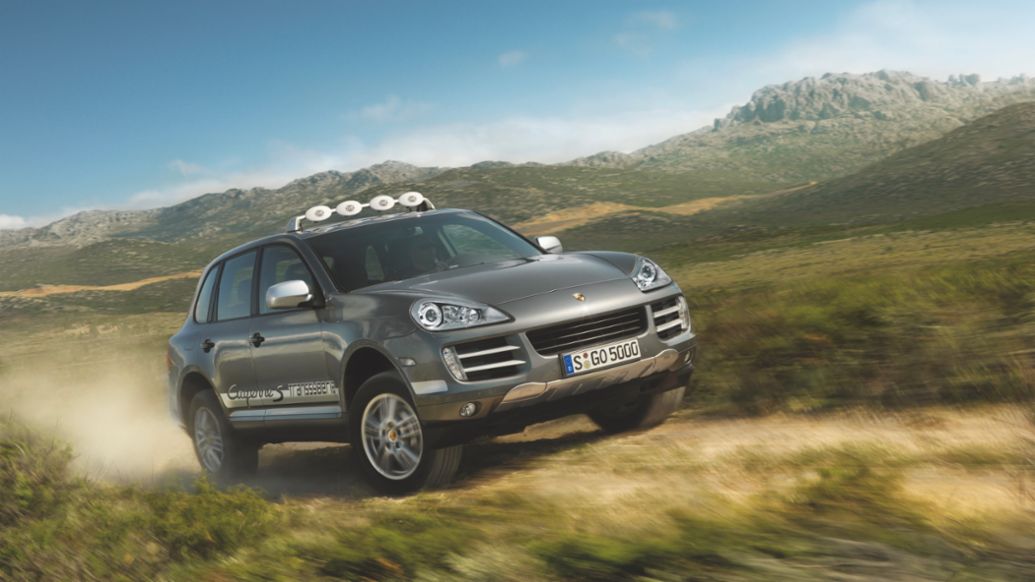
Visually, the special edition closely resembled the rally cars, not least due to its characteristic colour scheme. In addition to the familiar Black/Orange and Crystal Silver Metallic/Orange combinations, the somewhat more discreet Black/Meteor Grey Metallic and Meteor Grey Metallic/Crystal Silver Metallic variants were also available. Accents in contrasting colours completed the exclusive character of the Transsyberia special edition, both outside and inside. Although it was not quite as rare as the 26 customer rally vehicles, a total of just 285 were built.
